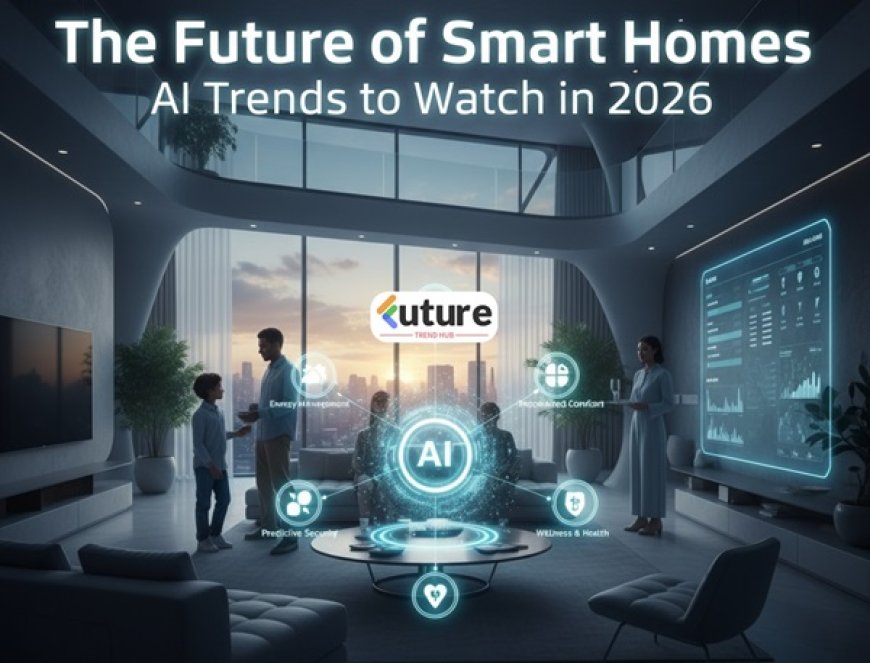The Future of Smart Homes - AI Trends to Watch in 2026
Smart homes are no longer just a futuristic concept — they are becoming an everyday reality. With the rapid advancement of Artificial Intelligence (AI), connected devices, and the Internet of Things (IoT), the way we live at home is transforming dramatically. As we move into 2026, smart homes will be more intelligent, secure, and energy-efficient than ever before. Let’s explore the AI trends shaping the future of smart homes in 2026.

1. Hyper-Personalized Home Automation
In 2026, AI-powered smart homes will deliver a truly personalized experience. Imagine lights adjusting automatically to your mood, thermostats predicting your preferred temperature, and kitchens suggesting meals based on your diet. AI will learn individual routines and create a seamless living environment tailored to each resident.
2. Voice and Gesture Recognition 2.0
Voice assistants like Alexa, Google Assistant, and Siri are evolving into multi-sensory AI companions. By 2026, we will see gesture recognition and emotion detection, allowing users to control devices with simple hand movements or even facial expressions. This will make smart homes more accessible for elderly and differently-abled individuals.
3. AI-Powered Energy Management
Sustainability will be a top priority. AI-driven energy systems will optimize power usage, integrate with renewable sources like solar panels, and automatically shift appliances to low-cost electricity hours. This trend will reduce utility bills and lower the carbon footprint of households.
4. Smarter Home Security
Home security in 2026 will go beyond traditional CCTV. AI-enabled surveillance systems will detect unusual activity, recognize faces, and send instant alerts to homeowners. Combined with biometric locks and drone monitoring, smart homes will provide unmatched protection and peace of mind.
5. Connected Health Monitoring
With healthcare becoming more home-centered, AI will play a major role. Smart homes in 2026 will feature AI-driven health monitoring devices that track vital signs, detect falls, and connect directly with healthcare providers in case of emergencies. This will especially benefit aging populations.
6. Interconnected Smart Ecosystems
Currently, most smart devices work in silos. By 2026, AI ecosystems will unify all devices, from appliances to entertainment systems, into a single intelligent network. Brands will collaborate to provide cross-platform compatibility, ensuring users don’t have to stick to one ecosystem.
7. AI in Smart Kitchens
Smart refrigerators, AI cooking assistants, and automated grocery replenishment will make kitchens more efficient. By analyzing consumption patterns, AI will suggest recipes, order groceries, and even prevent food waste by reminding you about expiry dates.
8. Privacy and Ethical AI in Homes
As homes become smarter, data privacy concerns will grow. In 2026, privacy-focused AI solutions will emerge, ensuring that data is processed locally within the home instead of cloud servers. Users will demand ethical AI systems that respect boundaries while still offering convenience.
The future of smart homes in 2026 will be defined by personalization, energy efficiency, enhanced security, and health integration. With AI at the center, our homes will no longer just be places to live — they will become adaptive ecosystems designed to improve our lifestyle, safety, and well-being.
If you are planning to upgrade your home, watch out for these AI trends — because the future of living is smarter than ever before!







